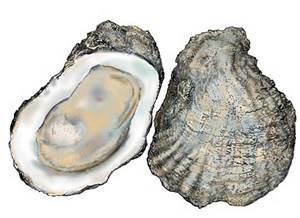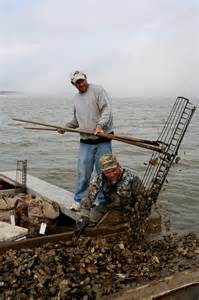I was trying to think of a topic that could connect Thanksgiving and our marine environment. Like many others, when I think of Thanksgiving images of Pilgrims and native Americans come to mind. There is the turkey – and I wrote about “turkey fish” (another name for lionfish) last year. So I continued to think. One thing I do know about the native Americans who lived in this area, they liked oysters. We find middens (piles of oyster shell) in many places around the Gulf coast. These were discard piles from their consumption of the animal. Lots of these indicate, at least to me, that they enjoyed them… and we do also. Oysters are a part of Gulf coast culture and many have them with their Thanksgiving meal.

Photo: FreshFromFlorida
Oysters are animals – meaning they lack cell walls and must consume their energy. The food of choice is plankton, sounds good doesn’t it! They possess two tubes called siphons which basically filter seawater. One brings water in, the other expels it. As the water enters their body they filter it for food and oxygen. As it leaves they expel waste and carbon dioxide. At times sand is sucked in and becomes lodged – they cannot expel. This “irritant” is covered by a material called nacre and becomes a pearl. Most are not round nor pretty but occasionally there are nice ones… Pacific oysters make better pearls. Amazingly a single oyster can filter up to 20 gallons of water in a day during the warmer months.
They are invertebrates and belong to the phylum Mollusca – meaning they have a soft body. Many invertebrates have a soft body, but what makes mollusks different is that they have bilateral symmetry (a head and tail end), a coleomic cavity (which allows organ development and increased size), and unique to them is a tissue called a mantle (which can secrete a calcium carbonate shell – and most mollusks do this).
Oysters are in the class Bivalvia – meaning they have two shells connected by a hinge at a point called the umbo. Other bivalves include the clams, scallops, and mussels. All of these are popular seafood products. Oysters differ from other bivalves in that they are cemented to a structure and cannot move around (sessile). Many mussels are sessile also but oysters differ in that they use calcium carbonate to literally cement themselves to the substrate, where mussels use a series of threads to do this. Cementing to the substrate means that they are picky about their habitat – it needs to have a hard substrate, sand will not do. We all know this. Place a piling, clay pot, board, or boat in the water… and oysters find it. Typically, they will attach to each other and form small clumps of oysters. These clumps form larger structures we call oyster reefs (or oyster bars) and this is what the commercial oysterman is looking for – and the recreational boater is trying to avoid!
So how do these oysters, who are sessile, find these habitats? Well, when it is time to reproduce oysters (which are hermaphroditic) release their gametes into the water. The sperm and egg that find each other form a planktonic larva called veliger. To increase the chance of finding each other the oysters release their gametes at the same time – a mass spawn. There are a variety of factors that trigger this but water temperature seems to be an important one. The veliger drift in the currents, developing into juveniles, and then settling out as small oysters called spat. If the currents have brought them to a good location, the spat settle on a hard substrate and the next generation begins. If not, they die. So literally millions of fertilized veliger are produced from individual adults. In many cases the suitable substrate are other oysters.

Photo: Sea Grant
Today oysters seem to be in trouble. Large bars have disappeared due to dredging and over harvesting. Hurricanes certainly do damage to some and poor water quality alters their growth and development. Recently problems in Apalachicola include the lack of river water reaching the Gulf. The higher salinities created by the reduction of river flow have increased the number of oyster predators (starfish and snails) as well as diseases. All of that said, they are still a popular seafood item and enjoyed by many during the holidays. The cooler months mean less bacteria in the water and fewer problems consuming them raw. Cooked oysters have few problems… period.
I hope all have a Happy Thanksgiving and if you have not tried oyster dressing, maybe this year could be the year.
Happy Holidays.
 0
0
